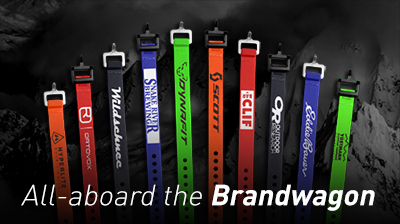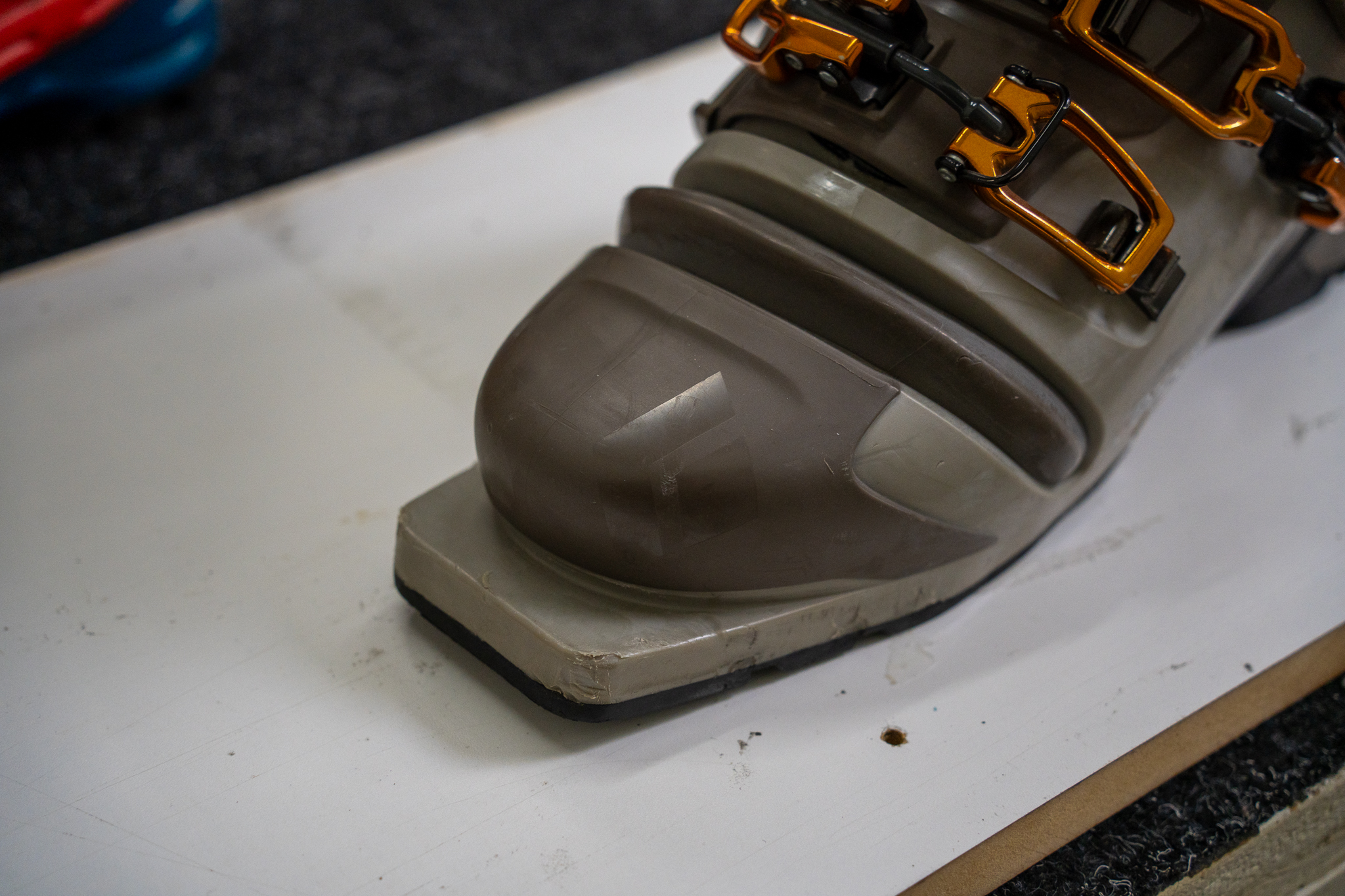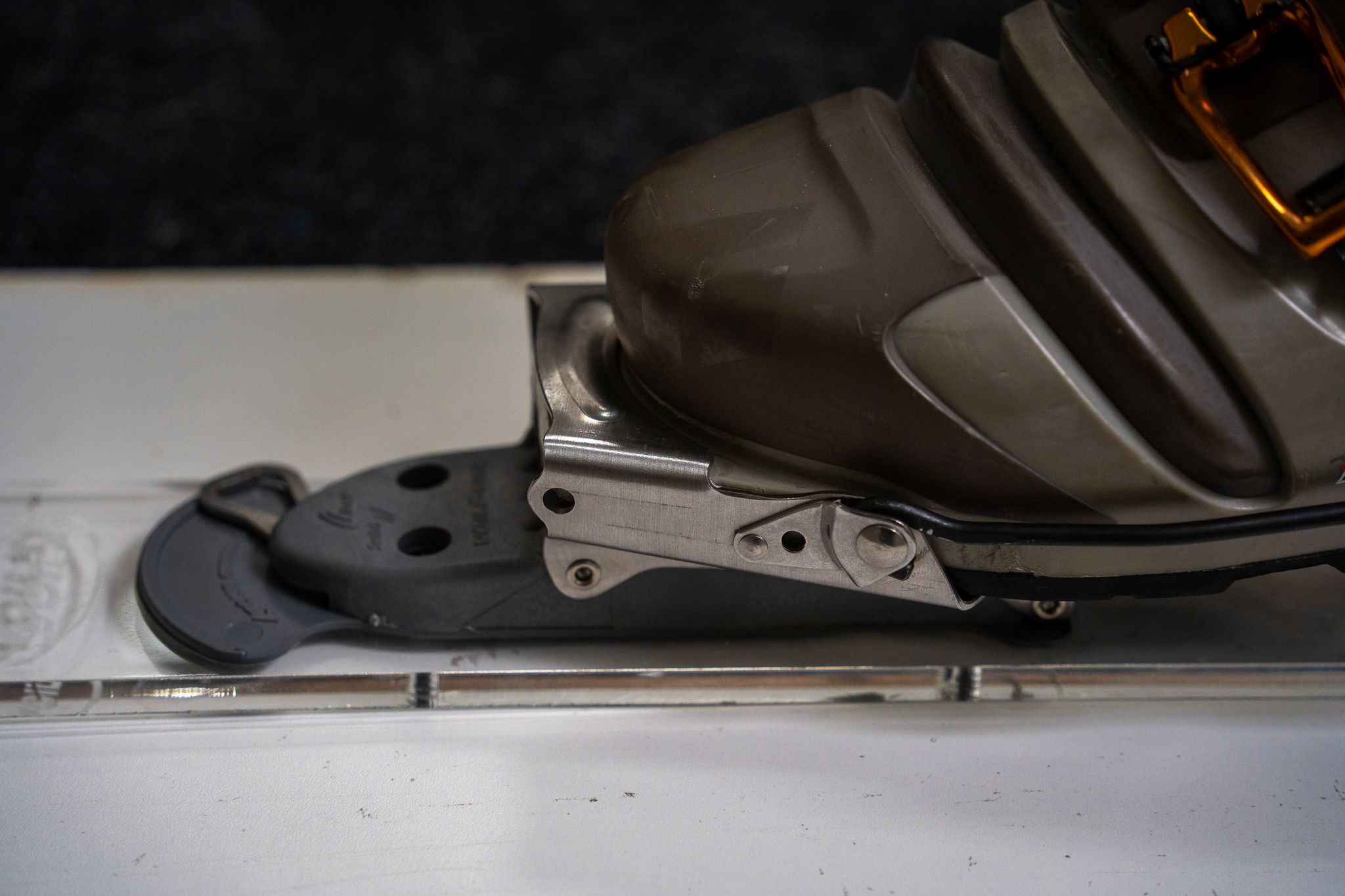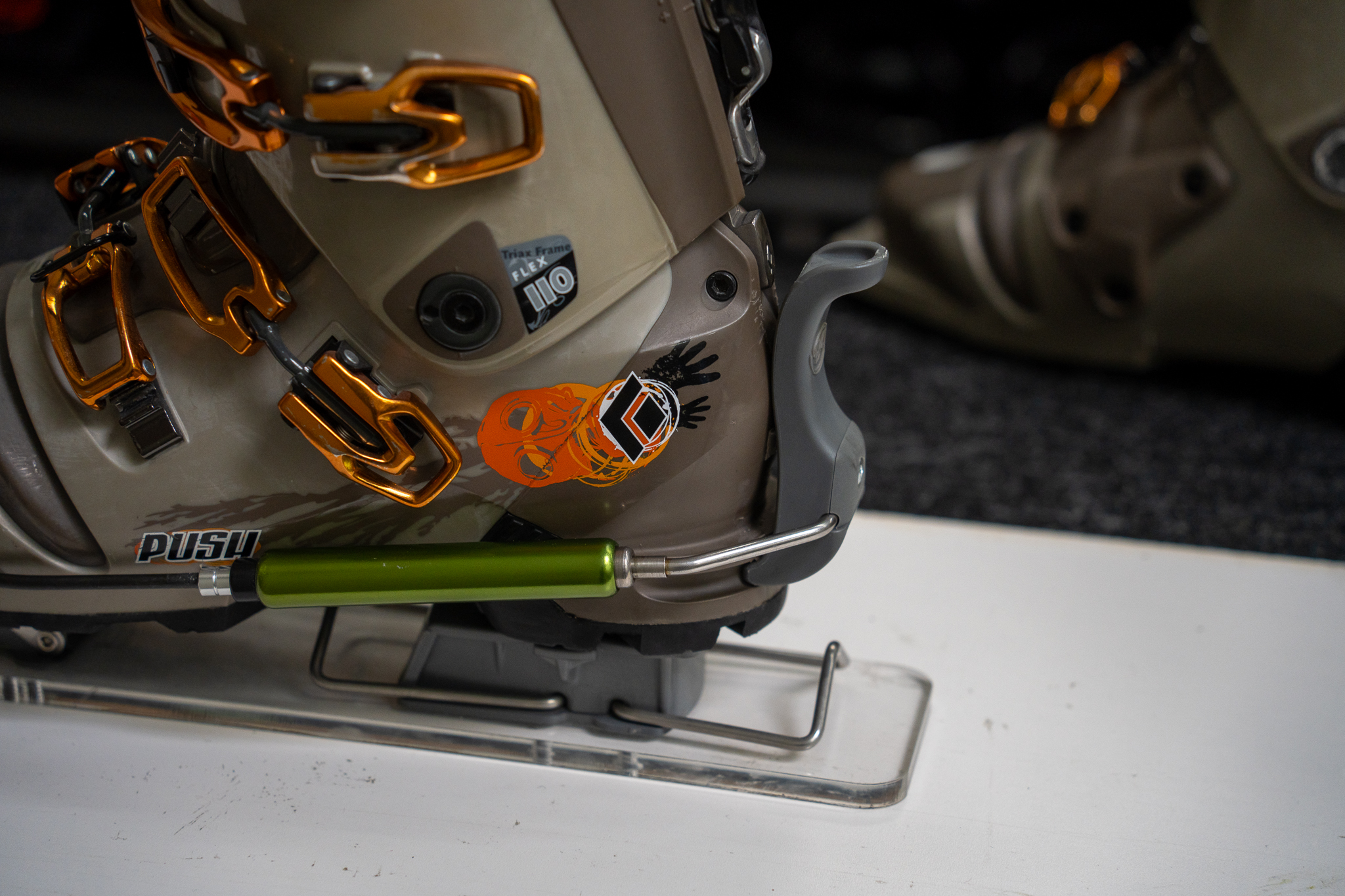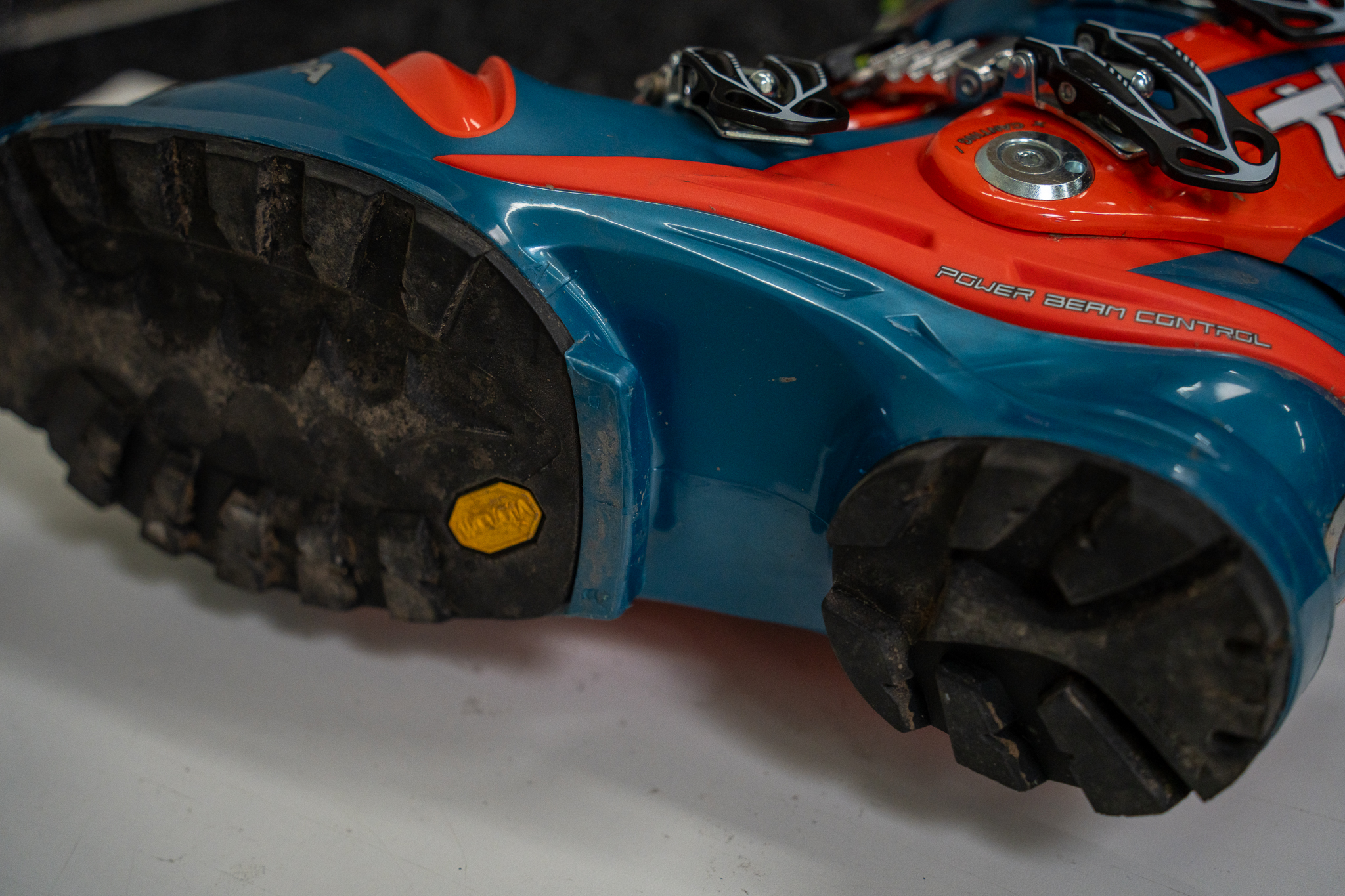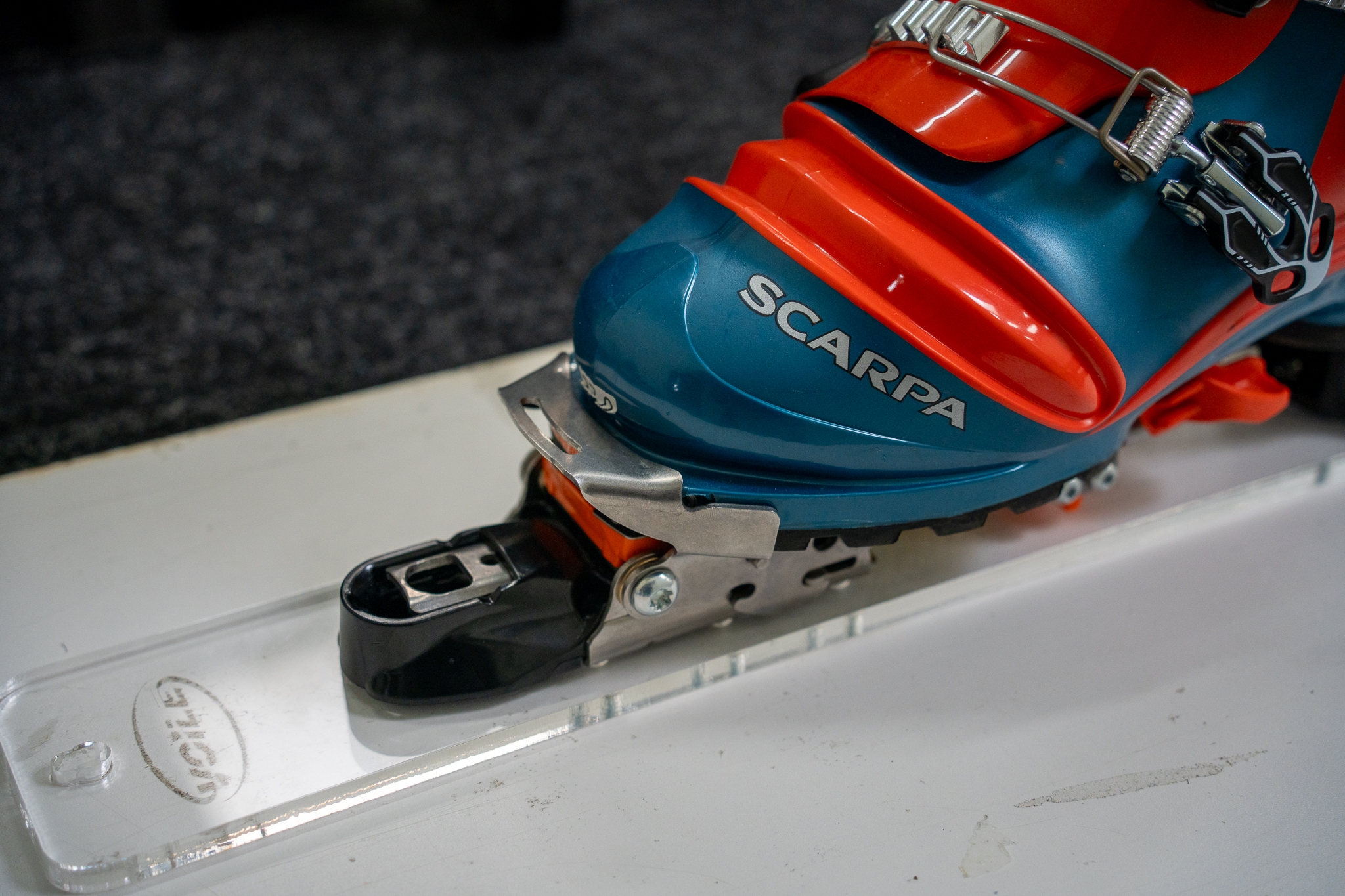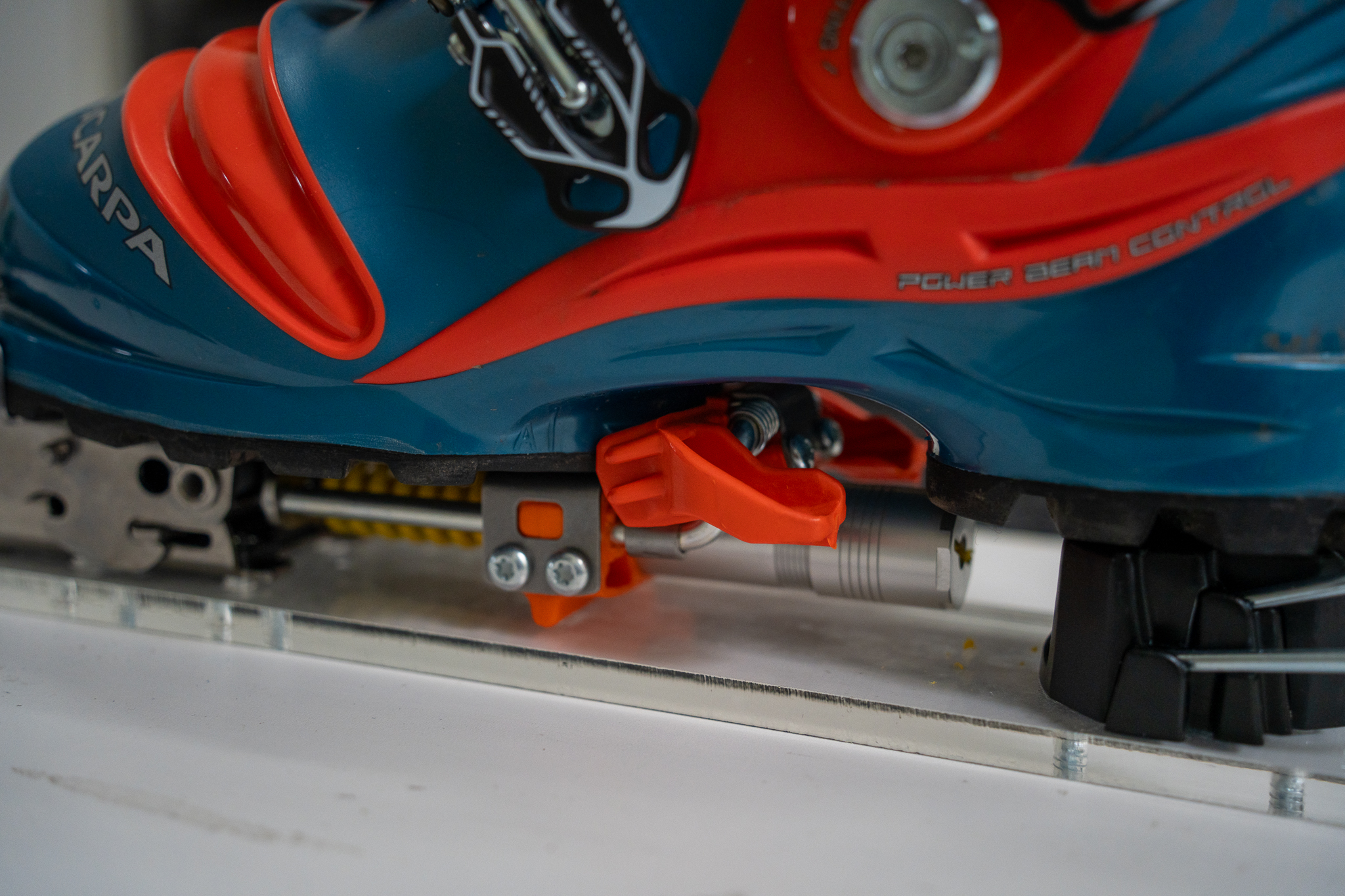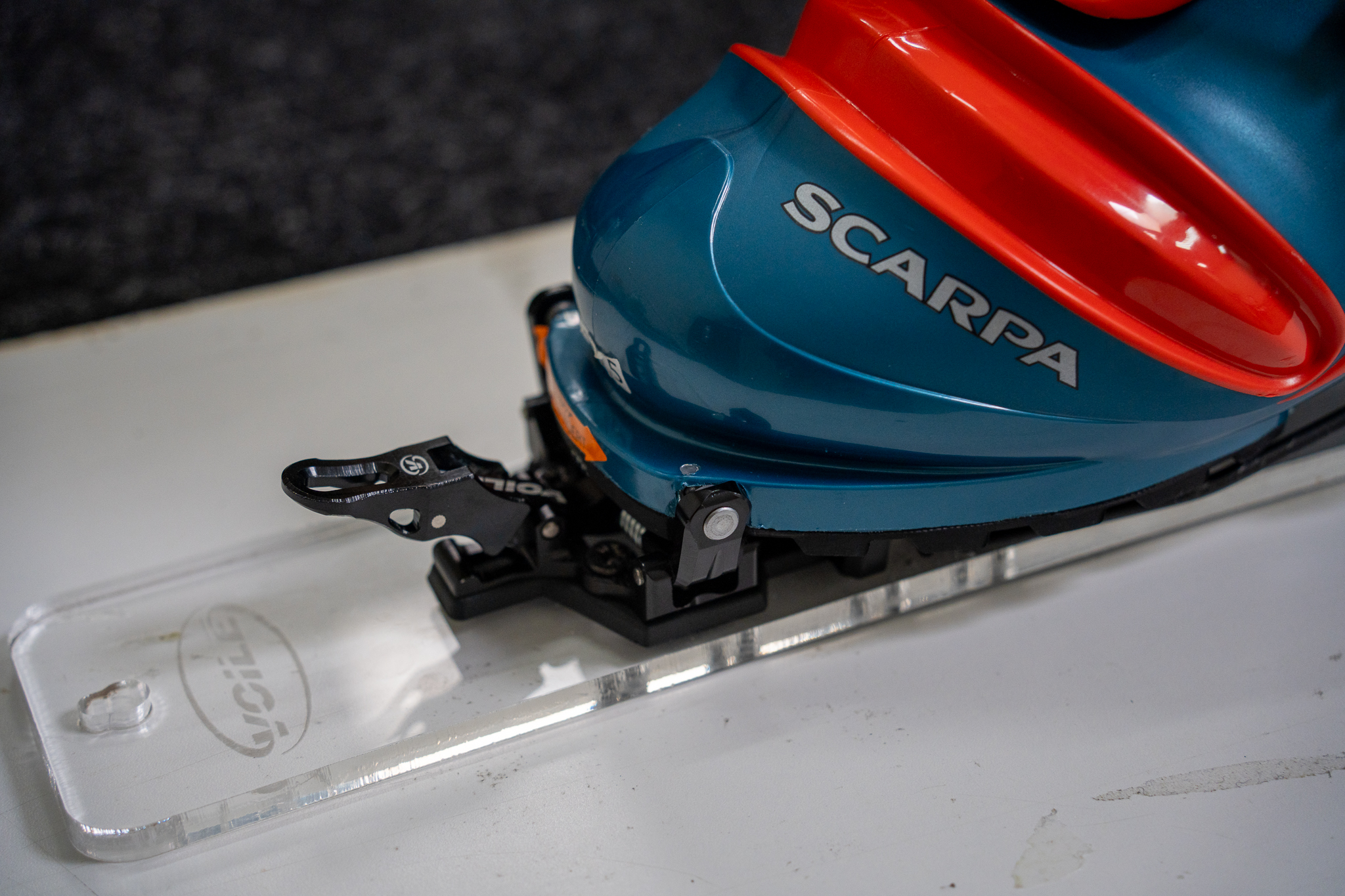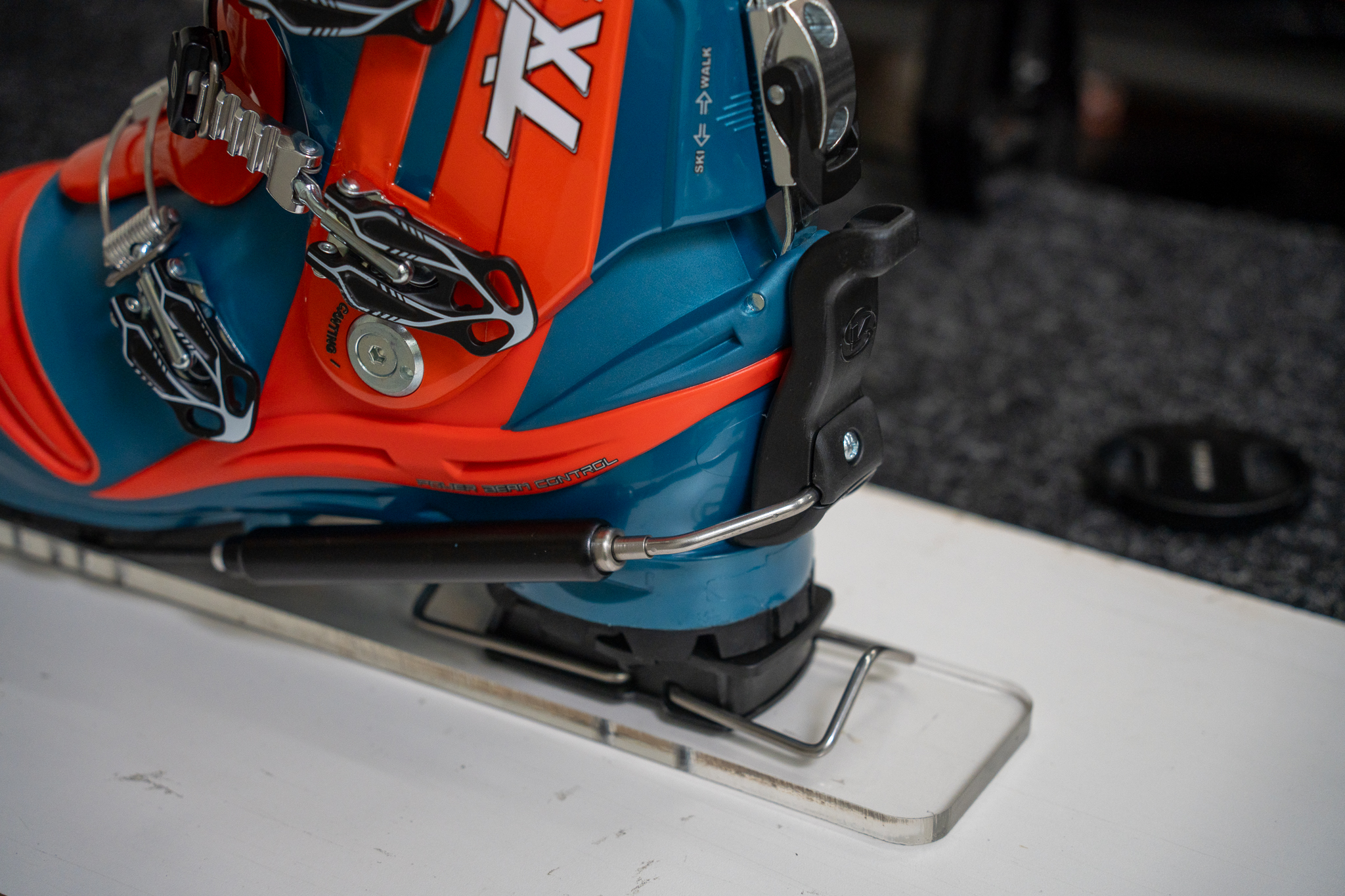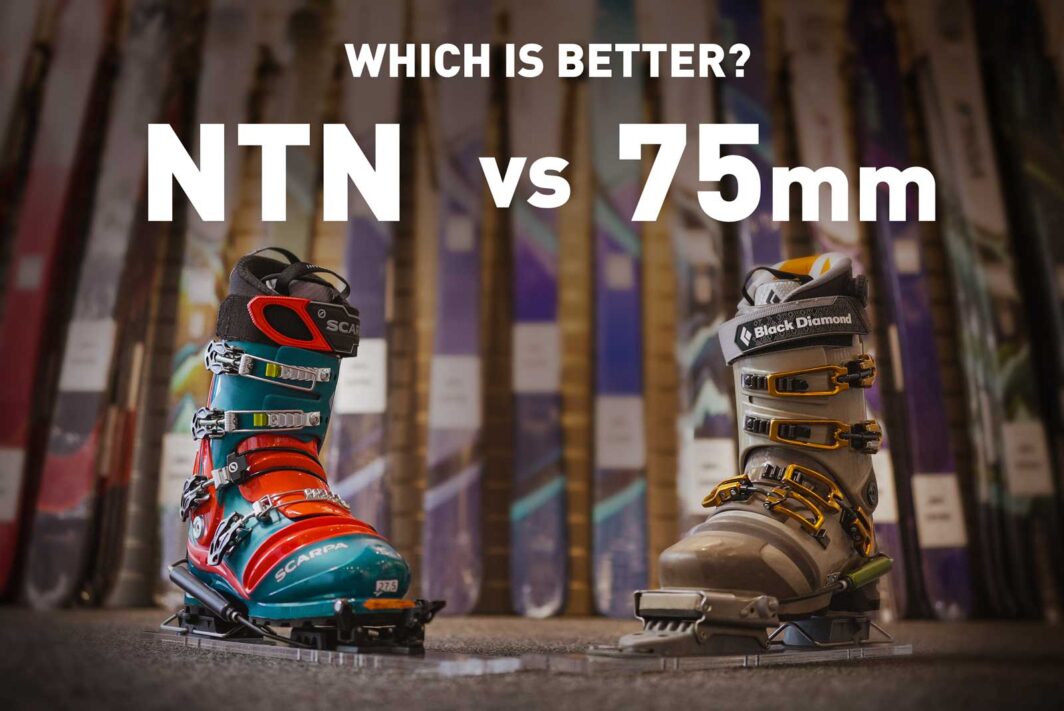
NTN vs 75mm: Which is better?
Share this Post
Greetings to the telemark skiers and the telemark-curious. Today we are diving into a debate that echoes through ski shops, chairlifts, and internet forums everywhere: Should you opt for an NTN (New Telemark Norm) or 75mm setup? The discussion of NTN vs 75mm is not just a matter of preference, but a significant decision that will impact your experience on the slopes. As a manufacturer who is just as passionate about the 75mm legacy as we are about embracing NTN, we’re here to guide you through this decision-making process. Let’s explore both options to help you find your perfect fit.
Here is a full video breakdown. For those who prefer a written deep dive, continue below. Enjoy!
Classic Charm: 75mm Bindings
The beloved 75mm setup — iconic in the realm of telemark skiing. Even if you’re an NTN diehard, chances are, you started telemark skiing on one of these and likely still keep one around in the gear corner. The allure of the 75mm binding is its simplicity. It’s durable, reliable, and offers a familiar feeling for seasoned telemark skiers.
The Pros
With duckbill boots that fit firmly into the toe of the binding, and tensioned rods that latch securely to the heel of the boot, the 75mm binding provides a snug connection between boot and ski. This allows for fluid, elegant turns, and a feel that allows you to drop the knee with whatever level of depth you please.
Plus, its affordability makes it an attractive option for those looking to dip their toes into the world of telemark skiing without breaking the bank. It’s not uncommon to find used 75mm boots, bindings, and skis at your local gear consignment shop or online for a fraction of the cost of modern NTN gear.
The 75mm system has been around for a long time, meaning that it’s had decades of attention and innovation applied to it. Many of the kinks have long been worked out, and what remains is a simple, solid, and dependable binding interface. Now that’s something we can stand behind.
The Cons
As with any classic, there are limitations to consider. While the 75mm binding excels in many areas, it may lack the power and precision desired by aggressive skiers who are tackling steep, technical terrain. While there are stiff, shred-able, more active 75mm options…they don’t have quite the same precision you’d find in an NTN binding. You should also consider that most 75mm bindings don’t have a release feature. This is something to keep in mind if safety is important to you.
In terms of the future of 75mm telemark skiing, we still manufacture and carry a variety of 75mm ski bindings (and will continue to do so), but the modern boot offerings are dwindling as the industry shifts focus towards NTN. While there are still 75mm boots being manufactured, the options are increasingly limited unless you look towards the used gear market. Now, let’s dive into the New Telemark Norm!
Responsive and Efficient: The Era of NTN
The NTN system — a boot and binding norm that’s revolutionized telemark skiing. Developed to address the limitations of traditional bindings, NTN offers enhanced performance, power, and control on the slopes, further fueling the NTN vs 75mm debate with its innovative features.
The Pros
At the heart of the NTN system lies the NTN boot, featuring a tech-toe design that eliminates the duckbill and utilizes a robust, step-in binding interface. This step-in interface lies underneath the arch of the boot and is often referred to as the “second heel” or “duck butt”.
While most NTN bindings latch at the second heel, Telemark Tech Systems (TTS) will pair the AT-style toe pins with a 75mm-style heel throw. TTS bindings offer an efficient touring-focused binding that has a downhill feel that lies somewhere between an NTN and 75mm setup. You can check out our latest TTS offering (The Transit) here.
Overall, the NTN boot and binding combo results in increased responsiveness, pin touring capability (depending on the binding), and enhanced edge-to-edge control, particularly on challenging terrain. Moreover, some NTN bindings (such as the InWild Meidjo 3.0) boast lateral release mechanisms akin to alpine bindings, enhancing safety and reducing the risk of injury. This added security can instill confidence in skiers pushing their limits in variable conditions.
The Cons
However, embracing NTN isn’t without its considerations. The initial investment can be substantial, as NTN boots and bindings tend to come with a higher price tag compared to their 75mm counterparts. Furthermore, NTN bindings activity may require a period of adjustment for those accustomed to the feel of traditional telemark boots and bindings.
Many long-time telemark skiers are critical of the NTN system because the turns themselves feel different. Of course, that’s even going to be true between different 75mm systems, but there is something about the fluidity and grace that was characteristic of the old school.
Choosing Your Path
So, which path should you choose: the time-honored 75mm bindings or the more recent technology of NTN? Ultimately, the answer lies in your skiing style, preferences, and aspirations on the mountain.
If you prioritize simplicity, versatility, and affordability, the 75mm binding may be your ideal companion. Embrace the classic charm of telemark skiing with its graceful turns and feel. If you’re just getting into the sport, this route won’t break the bank as you determine if telemark skiing is right for you. Best suited for those who are new to the sport, or the holdouts who can’t give up that sweet 75mm feel.
Conversely, if you crave performance, power, and precision, the NTN system beckons with its innovative design and enhanced capabilities. If you’re all about the latest and greatest, and want an uphill-efficient setup that has a ton of power on the downhill, NTN is the way to go.
Ultimately, there’s no wrong choice as telemark skiing in any fashion is the right choice 😉 Get out there, have fun, drop the knee, and don’t take it *too* seriously…
Share this Post



